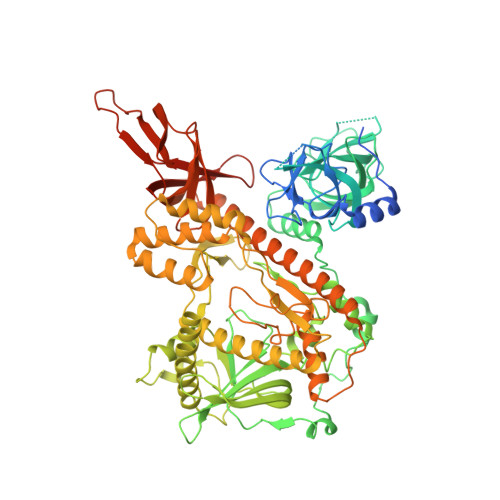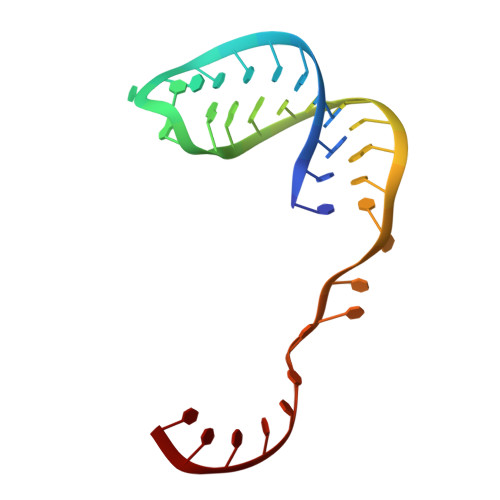A shape-shifting nuclease unravels structured RNA.
Meze, K., Axhemi, A., Thomas, D.R., Doymaz, A., Joshua-Tor, L.(2023) Nat Struct Mol Biol 30: 339-347
- PubMed: 36823385
- DOI: https://doi.org/10.1038/s41594-023-00923-x
- Primary Citation of Related Structures:
8E27, 8E28, 8E29, 8E2A - PubMed Abstract:
RNA turnover pathways ensure appropriate gene expression levels by eliminating unwanted transcripts. Dis3-like 2 (Dis3L2) is a 3'-5' exoribonuclease that plays a critical role in human development. Dis3L2 independently degrades structured substrates, including coding and noncoding 3' uridylated RNAs. While the basis for Dis3L2's substrate recognition has been well characterized, the mechanism of structured RNA degradation by this family of enzymes is unknown. We characterized the discrete steps of the degradation cycle by determining cryogenic electron microscopy structures representing snapshots along the RNA turnover pathway and measuring kinetic parameters for RNA processing. We discovered a dramatic conformational change that is triggered by double-stranded RNA (dsRNA), repositioning two cold shock domains by 70 Å. This movement exposes a trihelix linker region, which acts as a wedge to separate the two RNA strands. Furthermore, we show that the trihelix linker is critical for dsRNA, but not single-stranded RNA, degradation. These findings reveal the conformational plasticity of Dis3L2 and detail a mechanism of structured RNA degradation.
Organizational Affiliation:
W.M. Keck Structural Biology Laboratory, Howard Hughes Medical Institute, New York, NY, USA.















